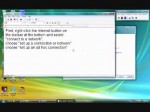
Internet Download Manager Corp. is a subsidiary of Tonec Inc. that develops Internet Applications since 1990. We have strong expertise in network programming, consulting and design services. Our company started Internet Download Manager project in 1998 when we where developing network libraries and console applications for accelerated files downloading. We are proud to announce that Internet Download Manager recently became a popular application with more than one hundred thousand users worldwide. You are welcome to give Internet Download Manager a try to handle your downloads. Internet Download Manager is a tool to download Internet files with comfort and speed. IDM can download several files and file segments simultaneously, pause and resume downloads with a single click, recover broken downloads from unexpected power shutoff or network related problems. Simple graphic user interface makes IDM application user friendly and easy to use. IDM can take over downloads from Internet Explorer, Opera, Mozilla and Netscape for any file types of your choice. It then shows its own download dialog where you gain additional control over your downloads. IDM has automatic update option and may check for the availability of a newer version once per week. Once a newer version has become available, IDM shows a dialog that describes all new features and suggests updating your current version. You can also download the latest version of IDM using Quick Update tool that comes along with IDM …




